
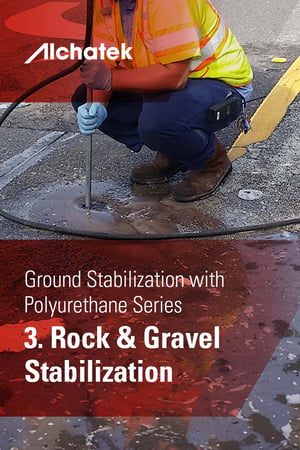 Ground stabilization extends beyond soil to include rock and gravel, crucial for various construction and infrastructure projects. Polyurethane foam, with its expansive and adhesive properties, is an extremely effective solution in these challenging environments.
Ground stabilization extends beyond soil to include rock and gravel, crucial for various construction and infrastructure projects. Polyurethane foam, with its expansive and adhesive properties, is an extremely effective solution in these challenging environments.
Case Study: Gravel Wall Stabilization
A collapsing old brick retaining wall necessitated urgent stabilization measures. The challenge was to remove a portion of the wall without causing the loose gravel foundation under a temporary concrete retaining wall to run out. The contractor chose AP Fill 720, a polyurethane resin, for its ability to permeate and lock the gravel in place, achieving high compressive strength. Approximately 50 gallons of AP Fill 720 were used, with injection probes placed strategically to ensure thorough coverage. The process was efficient, taking just one day with a small crew, and was a complete success, allowing for the safe removal of the brick and completion of the project with minimal costs.
Case Study: Railroad Ballast Rock Stabilization
AP Lift 475, a two-component polyurethane foam, was utilized for railroad ballast rock repair and stabilization. This resin was applied to loose bulk ballast stones on railway tracks, increasing their rigidity and stiffness. It served as a weather-resistant solution, reducing vibrations and providing a buffer zone. The application of AP Lift 475 on ballast stones created a polyurethane-stabilized ballast with superior mechanical properties compared to traditional methods.
Beyond Soil: Rock and Gravel Stabilization
These cases demonstrate the versatility and effectiveness of polyurethane foam in stabilizing not just soil, but also rock and gravel, underscoring its utility in a wide range of geotechnical challenges. For more information and expert consultation on ground stabilization solutions, Alchatek offers its expertise and innovative approaches tailored to various needs.



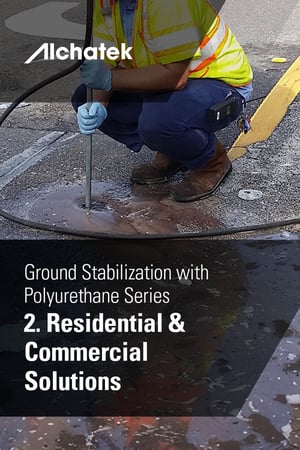 Polyurethane ground stabilization is a proven solution that has been successfully applied in countless real-world scenarios. From fixing residential driveways to supporting the foundations of commercial and municipal buildings, polyurethane foam offers a versatile and dependable approach to ground stabilization.
Polyurethane ground stabilization is a proven solution that has been successfully applied in countless real-world scenarios. From fixing residential driveways to supporting the foundations of commercial and municipal buildings, polyurethane foam offers a versatile and dependable approach to ground stabilization.
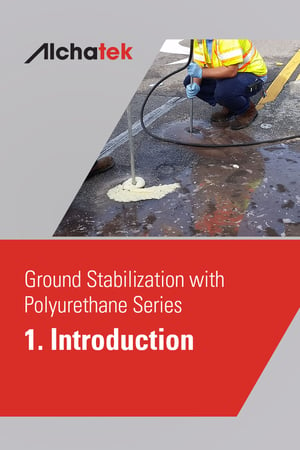 In the world of construction and infrastructure development, the quest for stability is paramount. Whether you're a property owner, manager, or builder, ensuring that the ground beneath your structures is solid and dependable is crucial.
In the world of construction and infrastructure development, the quest for stability is paramount. Whether you're a property owner, manager, or builder, ensuring that the ground beneath your structures is solid and dependable is crucial. 
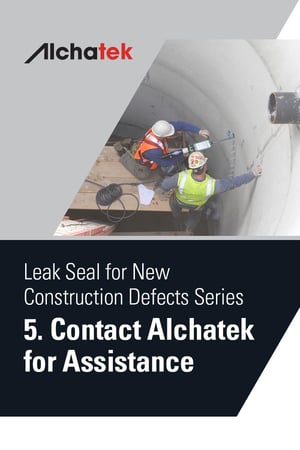 Taking proactive measures to stop early water intrusion issues that crop up during new construction projects is key to avoiding extensive damage and repairs later. Alchatek's leak prevention recommendations for new construction often utilize customized polyurethane sealants and barriers. These solutions provide maximum protection against water seepage through walls, floors, joints, entry points for utilities/conduits, and below-grade foundation surfaces.
Taking proactive measures to stop early water intrusion issues that crop up during new construction projects is key to avoiding extensive damage and repairs later. Alchatek's leak prevention recommendations for new construction often utilize customized polyurethane sealants and barriers. These solutions provide maximum protection against water seepage through walls, floors, joints, entry points for utilities/conduits, and below-grade foundation surfaces.


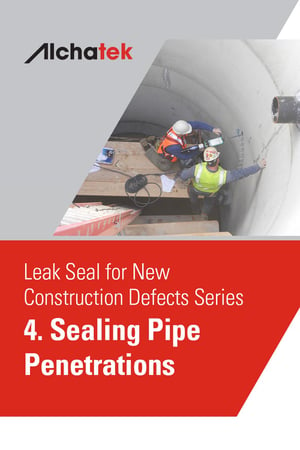 Pipe penetration sealing is a critical aspect of waterproofing in new construction, addressing the potential leaks that occur where pipes and conduits penetrate walls and floors. These penetration points are often the weakest links in a building's defense against water intrusion, particularly in areas subjected to high moisture or water pressure.
Pipe penetration sealing is a critical aspect of waterproofing in new construction, addressing the potential leaks that occur where pipes and conduits penetrate walls and floors. These penetration points are often the weakest links in a building's defense against water intrusion, particularly in areas subjected to high moisture or water pressure.
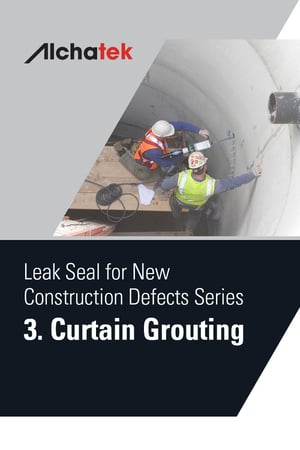 Curtain grouting is primarily employed to address multiple leaks at once. This technique originated in the 1960s. It was initially used to remedy water intrusion issues in sewer systems. Over time, its application expanded to a wide range of structures, driven by its efficacy in creating a barrier against water penetration. Curtain grouting involves injecting an expansive polyurethane grout through a wall or floor, into the soil on the other side. The grout then spreads out and expands, forming a 'curtain' that seals many leaks and cracks at once.
Curtain grouting is primarily employed to address multiple leaks at once. This technique originated in the 1960s. It was initially used to remedy water intrusion issues in sewer systems. Over time, its application expanded to a wide range of structures, driven by its efficacy in creating a barrier against water penetration. Curtain grouting involves injecting an expansive polyurethane grout through a wall or floor, into the soil on the other side. The grout then spreads out and expands, forming a 'curtain' that seals many leaks and cracks at once.
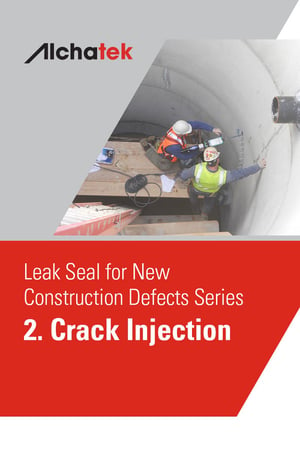 Water intrusion in new construction, a significant issue, often leads to costly defects. Crucial to this challenge are waterproofing membranes, which can be damaged during construction or compromised by cost-cutting measures. Similarly, inadequately sealed pipe and conduit penetrations can lead to leaks and electrical damage. A comprehensive approach, including proper installation of waterproofing and sealing penetrations, is vital. Polyurethane leak seal grouts are a key solution, effectively sealing against moisture intrusion and ensuring the durability of new buildings. This approach is essential for maintaining the integrity of construction projects against water damage. Crack injection with polyurethane grout is often employed in specific circumstances.
Water intrusion in new construction, a significant issue, often leads to costly defects. Crucial to this challenge are waterproofing membranes, which can be damaged during construction or compromised by cost-cutting measures. Similarly, inadequately sealed pipe and conduit penetrations can lead to leaks and electrical damage. A comprehensive approach, including proper installation of waterproofing and sealing penetrations, is vital. Polyurethane leak seal grouts are a key solution, effectively sealing against moisture intrusion and ensuring the durability of new buildings. This approach is essential for maintaining the integrity of construction projects against water damage. Crack injection with polyurethane grout is often employed in specific circumstances.
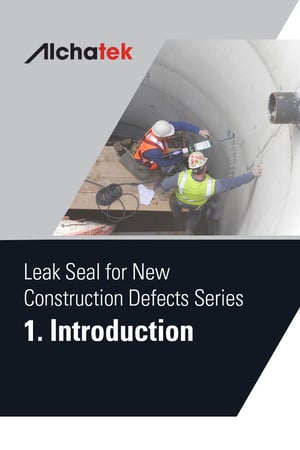 In the complex landscape of new construction, water intrusion stands as a formidable challenge, often leading to costly defects and prolonged maintenance issues. While waterproofing membranes play a crucial role in maintaining the integrity of the building envelope, there are other critical areas prone to leaks, such as pipe and conduit penetrations.
In the complex landscape of new construction, water intrusion stands as a formidable challenge, often leading to costly defects and prolonged maintenance issues. While waterproofing membranes play a crucial role in maintaining the integrity of the building envelope, there are other critical areas prone to leaks, such as pipe and conduit penetrations.



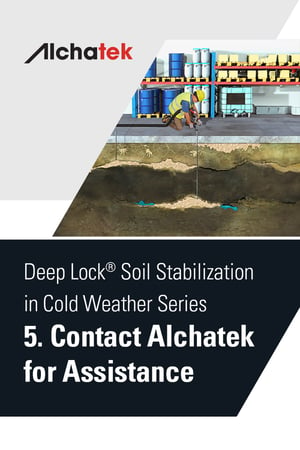 If you're a contractor grappling with deep soil stabilization challenges or looking to expand service offerings, Alchatek offers comprehensive support and training to elevate skills and expand business opportunities. Here's how the Alchatek team can assist you in enhancing your Deep Lock® soil stabilization capabilities:
If you're a contractor grappling with deep soil stabilization challenges or looking to expand service offerings, Alchatek offers comprehensive support and training to elevate skills and expand business opportunities. Here's how the Alchatek team can assist you in enhancing your Deep Lock® soil stabilization capabilities:
